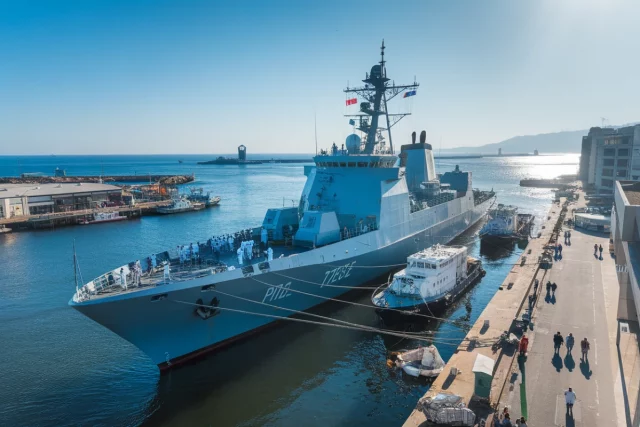A small revolution is sweeping through the Italian Navy with the commissioning of its newest aircraft carrier, the Trieste. This behemoth of the seas is poised to elevate Italy’s naval capabilities to new heights.
The Italian Navy Unveils the Trieste
The aircraft carrier Trieste, now the largest ship in the Italian Navy, has been officially commissioned in Livorno. This event signifies a major milestone in bolstering Italy’s naval prowess. Constructed by Fincantieri Group, this amphibious assault ship, classified as a Landing Helicopter Dock (LHD), is designed to replace the Giuseppe Garibaldi while complementing the Cavour, currently the flagship of Italy’s fleet.
Spanning an impressive 804 feet in length and 118 feet wide at the deck level, the Trieste slightly surpasses its predecessor, the Cavour, thereby reinforcing the Italian Navy’s stature in the Mediterranean. The President of Italy was present at this commissioning ceremony, highlighting both strategic and symbolic significance. Military experts regard the Trieste as a cutting-edge technological asset capable of hosting not only helicopters like NH90s but also American F-35 fighter jets, whose operational capabilities mark a significant advancement for Italy’s naval forces.
A Versatile and Strategic Asset for Italy’s Navy
The Trieste is engineered to undertake a variety of missions ranging from amphibious deployments to air-naval operations. Its construction primarily took place at Castellammare di Stabia shipyard near Naples, a historic site in Italian naval industry. Launched for the first time in 2019, this vessel features a 164-foot-long well deck that can accommodate landing craft capable of transporting fearsome Italian Ariete tanks. This amphibious capability makes the Trieste an indispensable tool for military and humanitarian operations on open seas.
- Amphibious deployment capabilities
- Modern combat system integration
- Drone operation platforms
In addition to complementing Cavour, Trieste also brings crucial flexibility to Italy’s navy by ensuring mission continuity when one carrier undergoes maintenance. This operational redundancy is vital for modern navies tasked with rapid interventions, international exercises, and safeguarding maritime interests.
Technological Innovations and Environmental Considerations
The Trieste is optimized for integrating modern combat systems and serves as a platform for aerial and naval drones, allowing Italy to maintain competitiveness against other European naval powers. Additionally, this ship boasts hybrid propulsion technology—an innovation aimed at reducing emissions while ensuring optimal long-range performance.

















